Behavioral segmentation stands out among other types of segmentation since it directly measures consumer behavior with your brand. In this experience economy, discovering and leveraging how your customers interact with your brand can significantly drive customer engagement, retention, and loyalty.
In fact, 77% of email marketing ROI comes from such campaigns. A person’s behavior patterns with others and companies indicate whether the experience is good. Behavioral segmentation helps discover unknown patterns and segments. We’ll talk more about it and why it matters with four examples.
What is behavioral segmentation ?
Behavioral segmentation separates the customers into different segments based on their behavior with your website or app—products viewed, clicked, added to cart, exited, etc., and their overall interaction with the brand on other platforms.
For example, if a customer repeatedly visits a product page without completing the transaction, it can imply that they are waiting for the price to drop. You can immediately identify this behavior with behavioral segmentation and send a discount code to motivate them to complete the purchase.
Why is behavioral segmentation important for your business?
The most significant differentiator of behavioral segmentation is that it doesn’t rely on static data, like demographics or location. But on highly dynamic data that changes all the time, like what customers want and what they need, how your customers make their decisions, why they prefer one product to another, how they feel about your brand, why they choose you, and who are your most loyal customers.
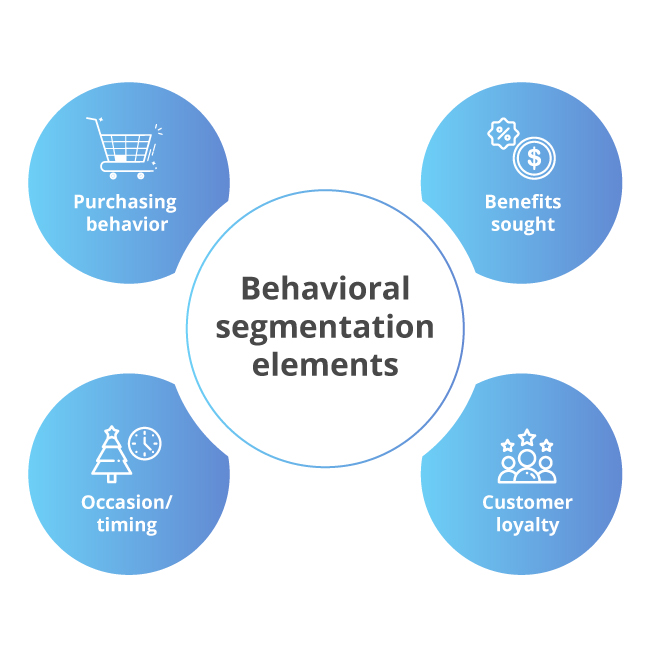
Organizations that leverage customer behavior data to extract behavioral insights outperform others by 85% in sales growth and more than 25% in gross margin.
Behavioral segmentation accurately targets the ever-changing buying behavior—timing, browsing pattern, decision pattern, loyalty, purchase scale, average cart value, etc., and that’s why marketing campaigns based on this can be more precise, offer personalized experiences, and be practical. It also drives unprecedented brand loyalty, puts you way ahead of the competition with targeted messaging, and helps reduce customer churn.
14 behavioral segmentation types explained with examples
Segmenting users by behavior is not as straightforward as demographic segmentation. User behavior differs widely between different industries, different companies in the same space, and even among customers of the same brand. Let’s run through some examples of behavioral segmentation and types.
1. Pre-buying behavior
Product clicks, adding to wishlist, adding to cart, and all other behaviors before making the purchasing decision. This is important to identify friction points and nurture users to become customers.
2. Purchase behavior: Amazon
Purchase behavior explains what motivates your customers to purchase, their obstacles, and the triggers they respond to. It helps you form strategies that support your customer’s buying decisions.
Amazon highlights a lightning discount deal to create subtle urgency and target customers encouraged by discounts. The brand addresses what customers think before making a specific purchase and, in this case, targets customers who seek discounts and are motivated by a time crunch when they are given one.
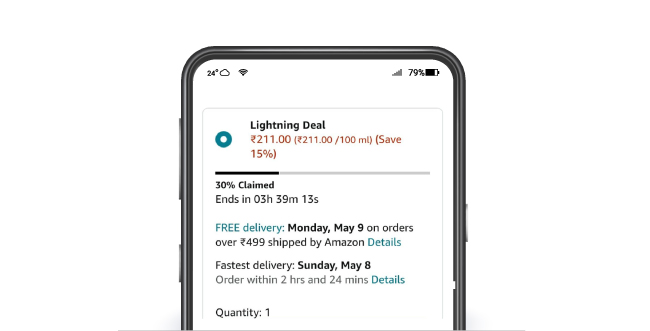
Sometimes, customers gather a lot of information before deciding and making comparisons, which is typical for expensive purchases. At other times, they impulse buy without much research or buy out of habit at a defined frequency. Amazon doesn’t use the same strategy and messaging to target all of these segments. It adjusts the strategy and messaging to fit customers’ purchasing behavior.
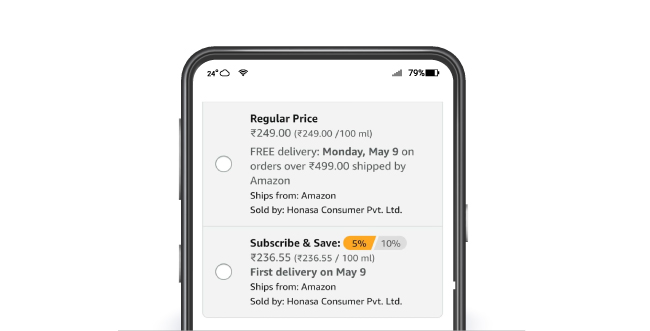
To target customers who consistently use certain products, Amazon highlights the ‘Subscribe and Save’ option, where customers can automate product purchases and avail of further discounts.
Additionally, when you have answers to questions like—how many interactions does it take for your customers to proceed to conversion, what were they searching for when they found your brand, or what are they searching for on your website/app, you can address their needs better, target them with personalized messaging, and are much more likely to convert them.
Purchase behavior segmentation covers a lot of ground and can be divided further into eight types:
1. Discount and price sensitivity
Some users may view products more than 20 times, but if they haven’t purchased them, they might wait for discounts or a specific price range.
2. Buying cart value
Which of your buyers have high cart values, which ones buy the most items, and which users have the highest average order value? Segments like these identify your best/worst customers.
3. Buying frequency
Some users may buy only on the weekends or on occasion. Others purchase some products every month on a specific date range. Segments like these uncover buying behaviors so you can target them more effectively.
4. Affinity to certain products
Building on the above point, you can segment users based on what they like. For example, have they viewed a specific category of sneakers like Air Jordans more than 20 times in the last week?
5. Dissonance reducing buying behavior: diamond rings
Customers are highly involved in the purchase but settle for the readily available one because the variety is limited, and there are no significant differences between similar products of different brands. Since the products are similar, brands must offer exceptional customer service or after-sale experience and focus on driving repeat purchases to stand out.
6. Variety seeking buying behavior: frozen foods
Customer involvement is low, but there are significant differences between brands. With abundant options, customers often switch to try different varieties. Established brands can induce habitual buying behavior, while new brands can offer discounts, free samples, etc., to target this purchase behavior.
7. Habitual buying behavior: toothpaste
Customers’ involvement is low, but brands have no significant differences. Customers don’t research before making such purchases and are driven by brands they have always used. Brands must build and maintain brand familiarity to influence this purchase behavior.
8. Complex buying behavior: cars, homes
Customers are highly involved since it’s an expensive purchase (an economically risky decision). They research and consult with their friends, family, and experts before deciding. Brands must influence customers’ beliefs and attitudes to target this behavior.
2. Occasion and timing: Uncommon Goods
You can also segment customers into different categories based on the occasion and timing. Here, customers interact with the brand only on special occasions, such as holidays or weddings.
Unique gifts brand, Uncommon goods, for example, sends one of the most well-known re-engagement emails to their dormant email subscribers just before Christmas and the holiday season to get them back. The brand targets customers who buy from them through these emails, especially before specific occasions (here, Christmas), as per their past behaviors.
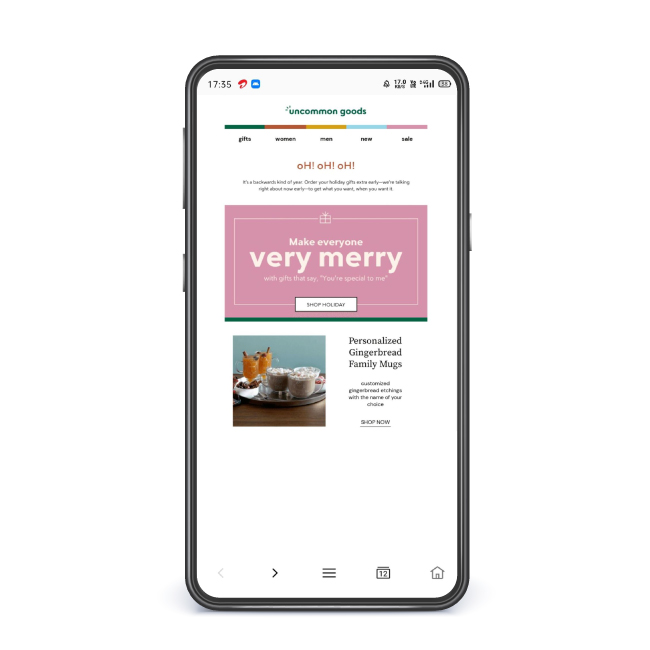
Similarly, brands can track the right timing when customer engagement is at its peak and reel in more customers by delivering personalized smart push notifications during those peak hours.
For example, Zomato sends lunch ordering notifications during lunch hours.
Occasions can also make space in a customer’s daily routine, for example, coffee before work, drinks on Friday after work, or ordering in and family time on Saturday nights.
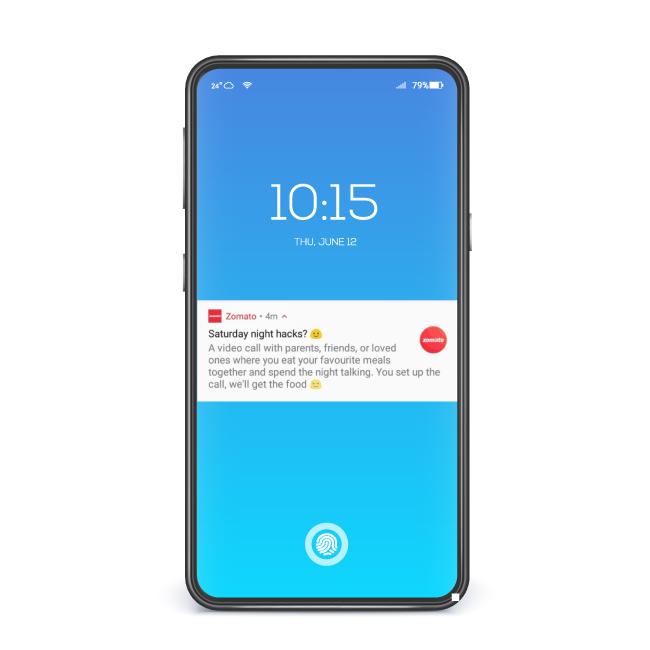
You can use these occasions to target, retarget, and engage customers at the right time.
3. Benefits sought : Sephora
Benefits sought segmentation divides your audience depending on the benefits they want from your products.
Sephora’s “Shop By Concern” category helps customers filter products based on their problems and the benefits they seek. In this way, the customers find the products faster, and the brand can use this data for segmentation and targeting purposes.
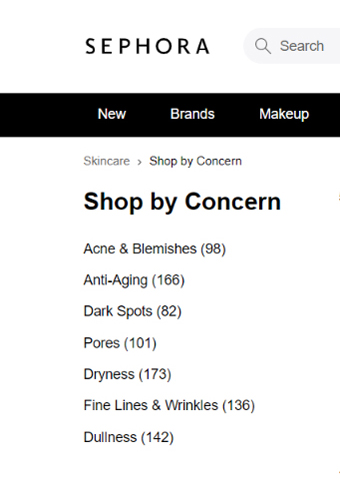
Sephora’s skincare collection caters to all kinds of customers. Some might need a product to combat dryness, while others want to reduce fine lines. Sephora targets all these segments individually based on the unique benefits its customers are looking for from its products.
Benefits sought segmentation communicates the right value to customers, like the USP of your product as perceived by your customers, areas where your product is better than your competitors, areas that please your customers, and areas that need improvement.
4. Customer loyalty : Native
Loyalty represents customer satisfaction. Loyalty-based segmentation divides customers based on their loyalty level, measured through the number of purchases, engagement, rewards programs, referrals, etc.
Skincare brand Native, offers quirky titles and certain perks to customers who display loyalty to the brand. The perks include early access to sales to get hold of the latest products. Moreover, they have introduced a point system where loyal customers can stack points for following them on social media, creating an account, making their first purchase, etc., and collecting discount coupons in exchange for these points.

Native treats its loyal customers as assets as they create a regular income stream and are instrumental in referrals, feedback, and word-of-mouth advertising. Identifying and extracting value from this segment helps Native understand the motivation behind its customer’s loyalty. It enables it to stage the company’s value proposition better and optimize its future campaigns.
For behavioral segmentation, marketers need to identify specific key points such as what exactly influenced loyalty in the customer journey, which customers should be offered exclusive loyalty programs, how to maximize engagement with loyal customers, and more. Brands must also prioritize the product feedback from this segment over others.
5. Churn and NPS: Meru
On the other side of the spectrum, across loyalty lies churn. Users often exhibit certain behaviors before churning. Netcore solutions like User Path Analysis help you identify these behaviors, like the customer journey stage, and build on your behavioral segmentation.
In the below example, Meru Cabs seeks feedback first from a churned customer. This helps them understand the NPS before deciding how to retarget with behavioral segmentation.

6. Dormancy
But even before churn, you should identify users that have gone dormant. Who hasn’t purchased for the last 3 months? Maybe for the last 3 weeks for industries like FMCG.
Here’s how you can segment them:

6 benefits of behavioral segmentation
Behavioral segmentation helps you tailor your marketing efforts to your customers based on their interactions with your brand. It can be a fresh change to your marketing strategy if you haven’t considered it seriously yet. Here’s how.
1. Leverage your loyal customers to drive further loyalty
Behavioral segmentation helps you understand larger trends, habits, and buying motivations of your most loyal customers, which you can leverage to drive loyalty from other customers.

2. The right message to the right customer
When you know how a customer behaves with your brand, reaching them with relevant, targeted, and personalized messaging at critical points in their customer journey to engage and convert them is easier.
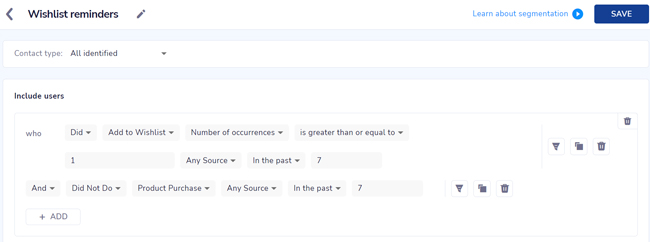
3. Reach customers at the right time
Behavioral segmentation helps you influence occasion-based behavior by targeting customers who buy only on select occasions. As a result, no marketing communication to the customers are wasted, you’re reaching the right target audience, and you’re less likely to spam customers.
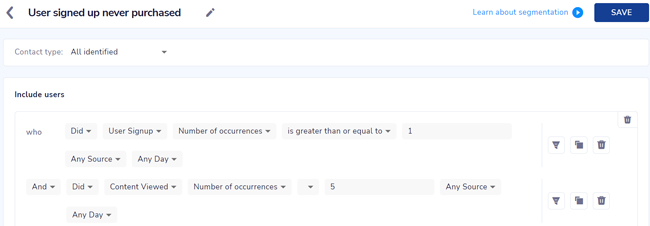
4. Optimize the marketing budget
Behavioral segmentation prevents you from spending a significant chunk of your marketing budget on customers who aren’t ready to buy or have low loyalty. With access to customers’ buying behavior, you can optimize your budget allocation, extract the most ROI, and upsell and cross-sell to customers who regularly interact with the brand.

5. Understand your customers thoroughly
Behavioral segmentation gives insights into what motivates your customers to choose you and buy from you, what works, what doesn’t, and what needs to improve to build upon your unique value proposition and stand out from competitors. You can leverage this to better segment and target, deliver precise messaging, and engage, convert, and retain faster.

6. Create a forward plan
Learning about the customer’s purchase behavior will help you create a restocking plan to keep up with the sudden surges in demand. Behavioral segmentation will provide valuable feedback to either speed up or abandon the development process of new products and their updates.
Behavioral segmentation for mobile marketing
When it comes to mobile, the approach to behavioral segmentation differs. The behavior will be similar to product view, add to cart, and purchase. But there can be additional parameters like:
- Active vs inactive app users tell you which segments are engaged
- User journeys inside the app show how users are using the app
- App drop-off points show friction points before desired goals are met
- Push notification engagement shows if you can engage them with push notifications
- In-app message engagement does the same
- WhatsApp/SMS/RCS engagement can be used to target users who don’t engage with app channels like push notifications and in-app messages
If your business is app first, these metrics become more important for you to track.
Tips to implement behavioral segmentation
Passing more events to your MarTech platform is a start. The more customer behavior a platform has, the more ways it can help you segment based on behavior.
- Identify relevant data points important to you
- Invest in more tools to track buyer behavior across touchpoints and integrate them into your customer engagement platform
- Run through the types of behavioral segmentation above and identify what you want to segment on
- Create different groups based on these types and run other marketing campaigns on them
- Personalize your communications to different segments so that your campaigns are relevant and you’re more likely to get conversions
- Start small, test, and measure if the segments give you the kind of results you’re seeking
You can also try a customer engagement platform like Netcore, which has many AI features that automate your tasks so you can focus on effective campaigns.
Conclusion
Understanding consumer behavior with your brand has its unique benefits. Since behavioral segmentation isn’t as straightforward as other forms of segmentation, guesswork will waste time and resources. This makes tools necessary. Netcore’s customer engagement platform helps you with behavioral segmentation, automation, journeys, channels, and a lot more. Visit our customer engagement page to learn about our platform.







